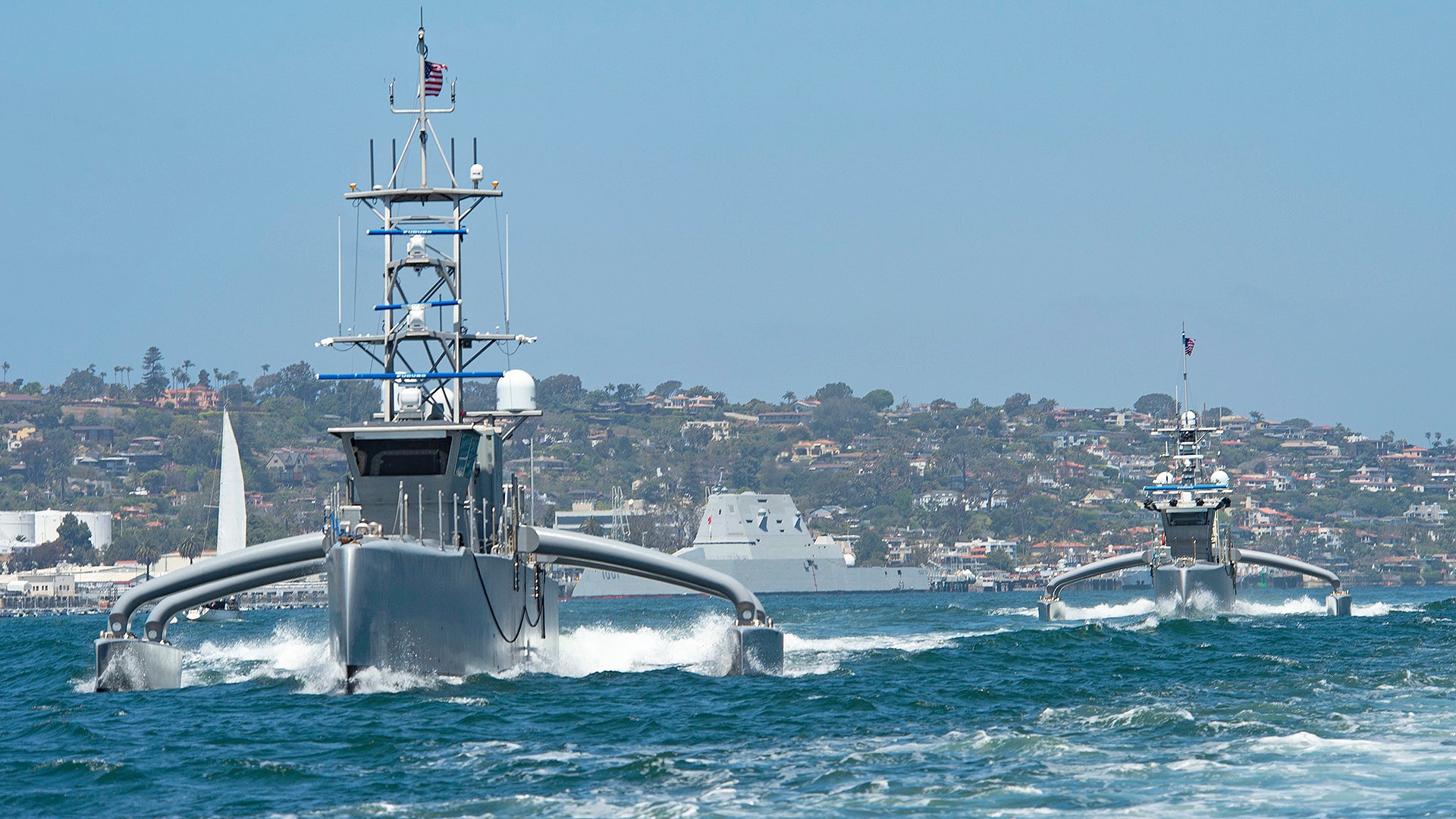The U.S. Navy will fire a missile at a surface target using information from a combination of manned and unmanned aircraft and surface vessels during a first-of-its-kind experiment that kicked off yesterday. The secretive Super Swarm project, details about which have been slowly trickling out in the past year, will also be part of this larger manned-unmanned event, which the service has dubbed Unmanned Integrated Battle Problem 21, or UxS IBP 21.
Navy Rear Admiral James Aiken, who is the top officer overseeing UxS IBP 21, offered some details about the experiment, which runs through April 26, during a roundtable call with reporters today. Aiken, who is presently head of Carrier Strike Group Three, and is set to be promoted and assigned as the commander of U.S. Naval Forces, Southern Command and U.S. 4th Fleet, said that the live-fire missile shoot was one of three major vignettes this manned-unmanned exercise will explore. The other two have to do with more general intelligence, surveillance, and reconnaissance (ISR) and manned-unmanned teaming concepts of operation.
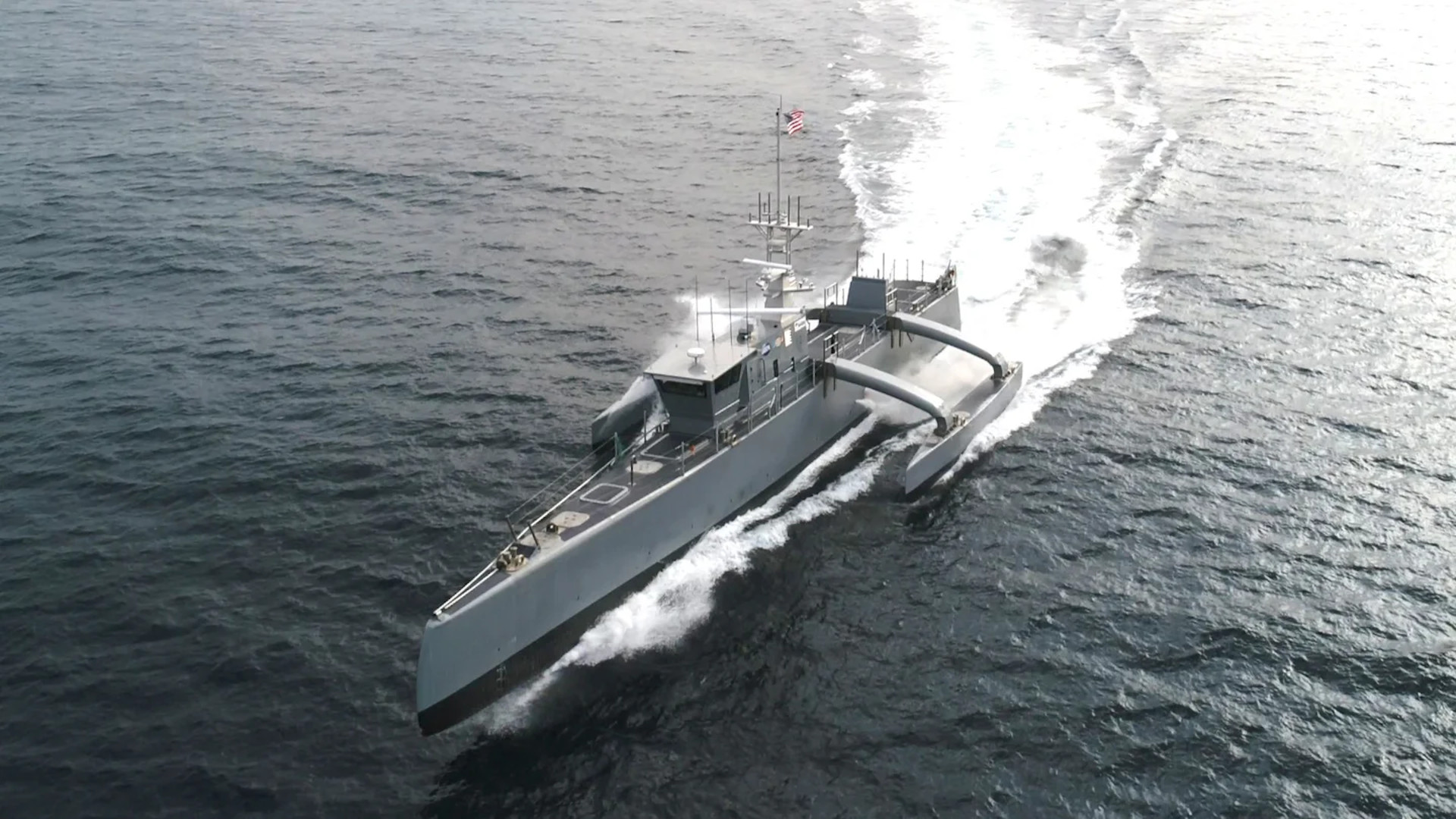
The Navy also provided a list of the major manned and unmanned participants in the experiment. On the manned side, on the surface, the Zumwalt class stealth destroyer USS Michael Monsoor will join four Arleigh Burke class destroyers, a Ticonderoga class cruiser, an example of each one of the two subclasses of Littoral Combat Ship (LCS), a San Antonio class landing platform dock amphibious warfare ship, and a Los Angeles class attack submarine. In the air, there will be P-8A Poseidon maritime patrol planes, E-2C Hawkeye airborne early warning and control aircraft, EA-18G Growler electronic warfare jets, and MH-60R/S Seahawk helicopters.
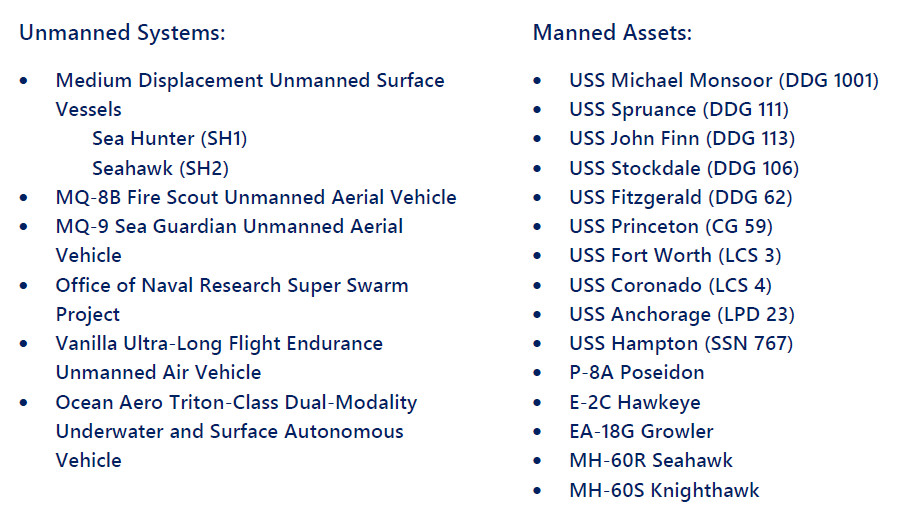
The unmanned side will feature both of the Navy’s Medium Displacement Unmanned Surface Vessels (MDUSV), the second of which, Seahawk, was only delivered earlier this month, as well as MQ-8 Fire Scout drone helicopters. General Atomics is providing a Sea Guardian unmanned aircraft, a version of the MQ-9 Reaper intended to perform various naval missions, including anti-submarine warfare, which you can read more about here.
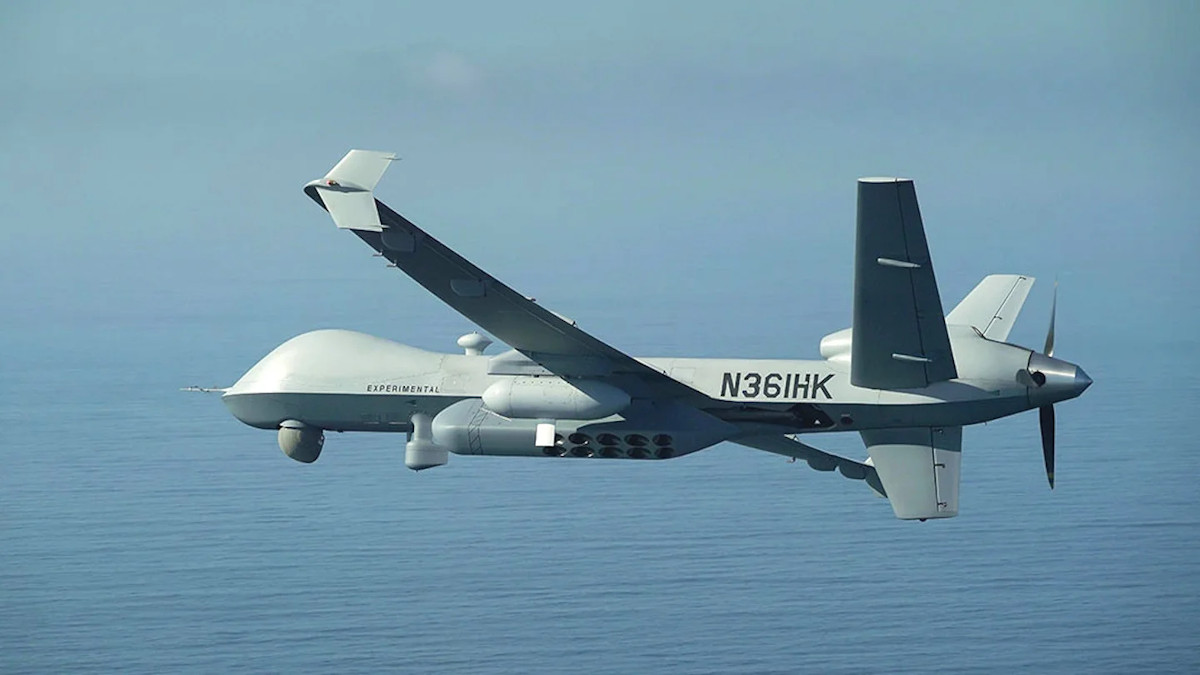
The Navy will also evaluate an “Ultra-Long Flight Endurance Unmanned Air Vehicle” from Vanilla Unmanned, primarily in the ISR role, during the experiment. The event will feature an unmanned vessel from Ocean Aero, which can operate on the surface, as well as underwater, too.


Rear Admiral Aiken provided very limited details about how any of these platforms would be employed over the course of UxS IBP 21. He did emphasize that this event was heavily focused on exploring various capabilities that unmanned platforms could offer the Navy when used in direct cooperation with its manned assets.
“I would tell you the one I’m most interested in and that I think is probably most challenging is we’re going to use a combination of manned and unmanned assets in order to get after a target and provide a targeting solution,” was also something Aiken could share. “What we’re going to do is, at range, we’re going to put a missile on the target.”
Due to the level of “classification,” Aiken could not offer any more detailed specifics about this portion of the experiment, such as what missile would be employed, what platform would fire it, and what assets would be involved in gathering the targeting data. He did say that “it will be an offensive missile” and the unspecified target will be “well beyond line of sight.” The Rear Admiral also said that other unspecified munitions would be involved in the other vignettes, but offered no further details.
The Navy has a number of air, surface, and submarine-launched anti-ship cruise missiles that would fit this general description, such as variants of the Harpoon, the Maritime Strike Tomahawk (MST), the Naval Strike Missile (NSM), and the AGM-158C Long-Range Anti-Ship Missile (LRASM). There are other available missiles that could be employed, too. This includes the surface-launched SM-6, which is primarily an anti-aircraft and missile defense weapon, but has a demonstrated anti-surface capability.
It is well-established already that unmanned platforms, both in the air and on the surface, can be valuable sensor nodes for spotting, as well as targeting enemy assets. It’s not the first time the Navy, in cooperation with other branches of the U.S. military, has demonstrated a capability like this, either. During the 2018 iteration of the Rim of the Pacific (RIMPAC) Exercise, a U.S. Army MQ-1C Gray Eagle drone, working together with a manned AH-64 Apache attack helicopter, provided data that helped enable shore-based anti-ship missile batteries to engage a maritime target, the ex-USS Racine, a decommissioned Newport-class landing ship tank amphibious vessel.
Finding ways to conduct stand-off targeting against hostile assets, particularly those in more heavily defended areas, and at increasingly longer ranges, will only be an area of increasing interest to the Navy as time goes on. These kinds of capabilities, whether provided by manned or unmanned assets, will be especially important as complements to future hypersonic weapons that will offer an ideal way to actually prosecute those types of targets.

Unmanned air and surface platforms, as well as undersea types, will offer valuable ways to distribute those capabilities going forward, too. A swarm of smaller pilotless aircraft or drone ships or submarines would be able to search a much broader area for threats in a shorter period of time, and at lower cost and risk, than could be achieved using larger, more exquisite assets.
Beyond targeting, swarms of small drones could also confuse, distract, or overwhelm enemy air defenses, as well as radars and other sensors on hostile ships, or even carry electronic warfare jammers or explosive payloads to attack them more directly. In a maritime context, while a small drone might not be able to carry a large warhead, it would not take much to destroy radar dishes or other specific systems on a hostile ship, which could lead to a mission kill, sidelining the vessel for an extended period of time.
While Aiken could not elaborate on how the Office of Naval Research’s (ONR) Super Swarm project will factor into UxS IBP 21, this is almost certainly part of the unmanned equation that the Navy is looking at with regards both to this experiment and in general. The Navy has released very few details about Super Swarm specifically, but we do know that 1,000 small drones with swarming capabilities were launched from a C-130-type cargo aircraft during one test conducted sometime in the past year or so under this program. The service has also been involved in a number of other drone swarm programs in the past decade, including an effort ONR led known as the Low-Cost UAV Swarming Technology (LOCUST) project.

In March, a contracting notice also revealed details about the Navy’s plans to use future unmanned surface vessels and undersea vehicles to launch drone swarms. That same month, the Pentagon announced that it had wrapped up a drone swarm technology project and had transferred technology developed under that program to various branches of the U.S. military, including the Navy.
Drone swarms a key component of the Navy’s shadowy Netted Emulation of Multi-Element Signature against Integrated Sensors (NEMSIS) effort. ONR has also been in charge of that program, which The War Zone was first to report on and that you can read about more here, which envisions a multi-faceted and heavily networked electronic warfare ecosystem involving manned and unmanned platforms that is centered on being able to cooporatively generate phantom fleets of aircraft and ships to distract and deceive opponents that have sensors placed across a wide area.
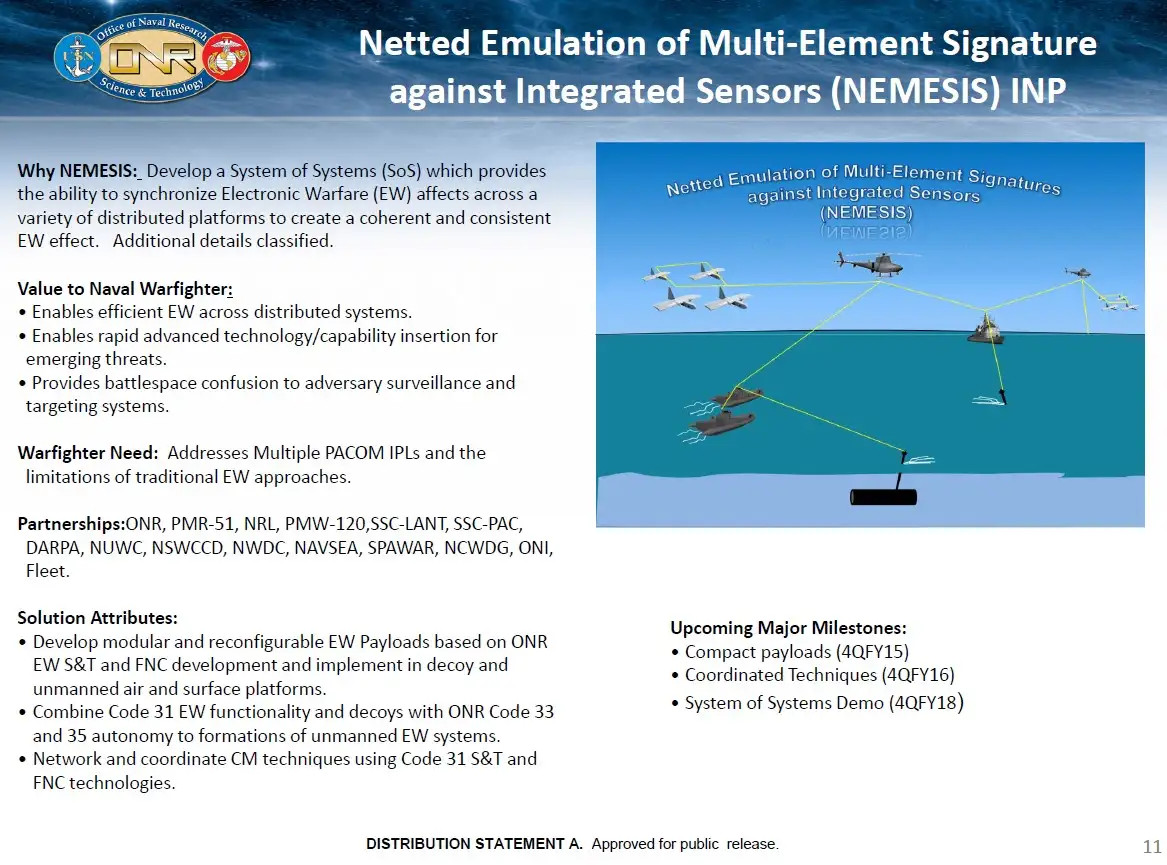
At its core, of course, UxS IBP 21, as well as similar future events, are intended specifically to help the Navy figure out exactly how various unmanned capabilities will fit into their future operations. The service’s leadership has been very outspoken about the growing importance of unmanned platforms.
At the same time, Congress has been less than sure about the Navy’s unmanned ambitions, with lawmakers often expressing concerns that the service has yet to really explain its goals in this regard. Rear Admiral James Aiken acknowledged today that “some tension there” between the Navy and the legislators that control its budget, but that he hopes UxS IBP 21 will be an important step toward resolving any such issues.
Will all this in mind, hopefully, we will begin to get more specific details about exactly what the Navy has demonstrated during this particular event in the near future.
Contact the author: joe@thedrive.com
